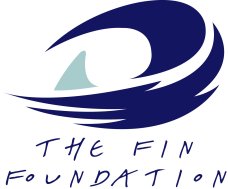The Fin Foundation is teaming up with other great organizations around the Southwest to do all we can to bring ocean awareness and education to the desert!
UA Science: Flandrau
UA Science: Flandrau got its start with a 1972 bequest from the estate of Grace H. Flandrau, noted author and frequent winter visitor to Tucson. The University decided to use the generous gift to fund a facility that would increase public understanding and appreciation of science. Originally known as The Grace H. Flandrau Planetarium, the facility was part of the UA Department of Astronomy. Its location on campus, near the Astronomy Department, Optical Sciences Center, Lunar and Planetary Laboratory and historic Steward Observatory, reflects its continuing connections to the research community. The Planetarium was designed by Tucson architectural firm Blanton and Company and opened its door to the public in 1975. UA Science: Flandrau brings together the University of Arizona and regional communities to inspire the teaching and learning of science and technology, create pathways to lifelong learning, and promote the area’s social, economic and environmental sustainability.
Reid Park Zoo
Reid Park Zoo’s mission is “to encourage human commitment to the conservation of biological diversity and to provide educational and fun experiences for visitors of all ages.” The Zoo, founded in 1965 with a collection of birds, prairie dogs, farm animals, and a few squirrel monkeys, has expanded to a 17-acre campus that houses hundreds of animals in naturalistic exhibits and annually hosts nearly 500,000 visitors. Reid Park Zoo is accredited by the Association of Zoos and Aquariums (AZA).
Tucson’s Children’s Museum
The Tucson Children’s Museum is a nonprofit 501(c)(3) organization whose mission is to provide fun, play-based, interactive, hands-on learning experiences for children and their families. With foresight and determination, a handful of prominent Tucsonans opened the Museum in 1986 in a one room building at Ft. Lowell Park. In 1991, the Tucson Children’s Museum moved into the historic Carnegie Library building in downtown Tucson. In 2009, over 102,000 children and families visited the Tucson Children’s Museum. The Museum’s 17,000 square foot facility features twelve permanent interactive exhibits, including Tucson Electric Power’s Electri-City, the Música de las Americas music room, the Art Studio, Dinosaur World, the Ocean Discovery Center, the Public Safety Station, Mind Your Own Body, Build It, Whistle Stop, Pet Vet and more. We also have the Enchanted Rain Forest which is specially designed for children four years and under.
Biosphere II
To serve as a center for research, outreach, teaching and life-long learning about Earth, its living systems, and its place in the universe.
- Catalyze interdisciplinary thinking and understanding about Earth and its future;
- Be an adaptive tool for Earth education and outreach to industry, government, and the public;
- Distill issues related to Earth systems planning and management for use by policymakers, students and the public.








 Phone / Email
Phone / Email RSS Feed - Blog
RSS Feed - Blog Facebook
Facebook




![GetAttachment[2].jpg](/wp-content/uploads/wppa/329.jpg)
